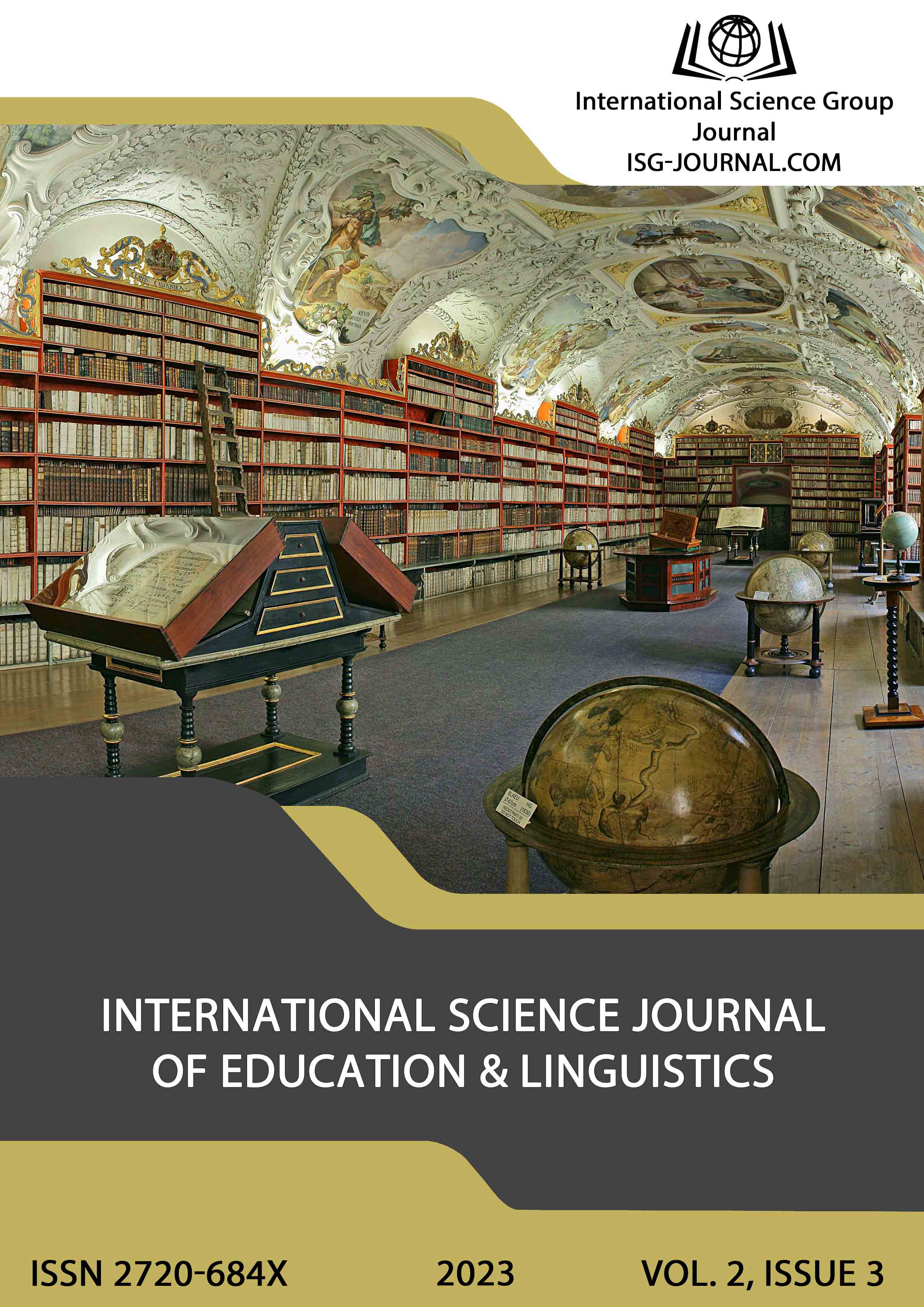Features of distance learning in medical education - Systematic review
DOI:
https://doi.org/10.46299/j.isjel.20230203.06Keywords:
student, teacher, medical education, professional training, technostressAbstract
Due to the COVID-19 pandemic, higher educational institutions have moved from the usual mode of study to online learning. Therefore, the purpose of this systematic review was to investigate the effectiveness of distance learning for students and teachers in the context of the COVID-19 pandemic. Data search was carried out in databases – PubMed, Google Scholar using the search strategy “distance learning”, “effectiveness of distance learning”, “online education”, “distance learning in medical education”, “feedback from students and teachers about distance learning”, “distance learning during COVID-19”. The screening study has found 174 records after removing duplicates. The qualitative synthesis included 15 studies. Analysis of the included studies was performed using the Risk of Bias Quality Assessment Tool for Cohort Studies and the Assessment Tool for case series and cross- sectional studies. Quantitative student performance data regarding distance learning is synthesized in 6 scientific publications using (structured questionnaire, FSHM (Fellowship in Secondary Hospital Medicine) program, online questionnaire, distance education perception scale). There were 3 studies which found that modular control of the distance learning has contributed to academic success of students and the effectiveness of exams (69.5%), compared to the paper version (68.81%). The other 3 studies describe the effectiveness of distance learning as a good way to gain theoretical knowledge. The following 5 studies describe students' preferences for distance learning, namely: flexibility of study time, improved quality of education, student motivation for online learning, safety of avoiding contact, and potential impact of infection. Among the shortcomings identified there are technological problems (poor Internet connection), a sense of isolation, increasing training load, technostress. The analysis of teachers’ feedback on the distance learning was performed in 4 studies. 61.1% of teachers are satisfied with online education, but 95.8% of researchers preferred face-to-face classes. According to this review, distance learning demonstrated a better impact on medical students' learning outcomes, ease of monitoring, flexibility of time and place, compared to traditional learning. In the presented results, the influencing factors of the selected studies are described, the positive and negative aspects of each research design are evaluated.
References
Abbasi MS, Ahmed N, Sajjad B, Alshahrani А, Saeed S, Sarfaraz S, et al. E Learning perception and satisfaction among health sciences students amid the COVID-19 pandemic. Work. 2020;67(3):549-556. https://pubmed.ncbi.nlm.nih.gov
Özkaya G, Aydin MO, Alper Z. Distance education perception scale for medical students: a validity and reliability study. BMC Medical Education. 2021;21:400. https://bmcmededuc.biomedcentral.com
Dulohery K, Scully D, Longhurst GJ, Stone DM, Campbell T. Emerging from emergency pandemic pedagogy: A survey of anatomical educators in the United Kingdom and Ireland. Clin Anat. 2021;34(6):948-60. https://www.ncbi.nlm.nih.gov
Vyas R, Zacharah A, Swamidasan I, Doris P, Harris I. Blended distance education program for junior doctors working in rural hospitals in India. Rural Remote Health. 2014;14:2420. https://pubmed.ncbi.nlm.nih.gov
Maertens H, Madani A, Landry T, Vermassen F, Herzeele IV, Aggarwal R. Systematic review of e-learning for surgical training. British Journal of Surgery.2016;11(10)3:1428–37. https://pubmed.ncbi.nlm.nih.gov
Lee IR, Kim HW, Lee Y, Koyanagi A, Jacob L, An S. Changes in undergraduate medical education due to COVID-19: a systematic review. Eur Rev Med Pharmacol Sci. 2021;25(12):4426-34. https://pubmed.ncbi.nlm.nih.gov
Gossenheimer AN, Bem T, Carneiro MLF, Silveira de Castro M. Impact of distance education on academic performance in a pharmaceutical care course. PLoS One. 2017;6:12(4):e0175117. https://journals.plos.org
Razzak RA, Al-Shaibani T, Naguib Y. Do students effectively learn physiology through distance online instruction? Medical students' perceptions and academic performance. Adv Physiol Educ. 2022;1;46(1):65-70. https://www.researchgate.net
Li W, Gillies R, He M, Wu C, Liu S, Gonget Z. et al. Barriers and facilitators to online medical and nursing education during the COVID-19 pandemic: perspectives from international students from low - and middle-income countries and their teaching staff. Hum Resour Health. 2021;12;19(1):64. https://human-resources-health.biomedcentral.com
Aristovnik A, Keržič D, Ravšelj D, Tomaževič N, Umek L. Impacts of the COVID-19 Pandemic on Life of Higher Education Students: A Global Perspective. Sustainability. 2020;12(20): 8438. https://www.sciencedirect.com
Al-Balas M, Al-Balas HI, Jaber HM, Obeidat K, Al-Balas H, Aborajooh EA, et al. Distance learning in clinical medical education amid COVID-19 pandemic in Jordan: current situation, challenges, and perspectives. BMC Med Educ. 2020;2:20(1):341. https://bmcmededuc.biomedcentral.com
Al-Mawee W, Morgan KM, Gharaibeh T. Student's perspective on distance learning during COVID-19 pandemic: A case study of Western Michigan University, United States. Int J Educ Res Open. 2021;2:100080. https://pubmed.ncbi.nlm.nih.gov
Armstrong-Mensah E, Ramsey-White K, Yankey В, Self-Brown S. COVID-19 and distance learning: Effects on Georgia State University School of Public Health Students. Frontiers in Public Health. 2020;8:1-10. https://www.frontiersin.org
Panisoara IO, Lazar I, Panisoara G, Chirca R, Ursu AS. Motivation and Continuance Intention towards Online Instruction among Teachers during the COVID-19 Pandemic: The Mediating Effect of Burnout and Technostress. Int J Environ Res Public Health. 2020;30;17(21):8002. https://www.mdpi.com
Patjas M, Virtanen-Greis H, Pietarinen P, Geneid A. Voice symptoms in teachers during distance teaching: a survey during the COVID-19 pandemic in Finland. Eur Arch Otorhinolaryngol. 2021;278(11):4383-90. https://pubmed.ncbi.nlm.nih.gov
Downloads
Published
How to Cite
Issue
Section
License
Copyright (c) 2023 Lesia Serediuk

This work is licensed under a Creative Commons Attribution 4.0 International License.





